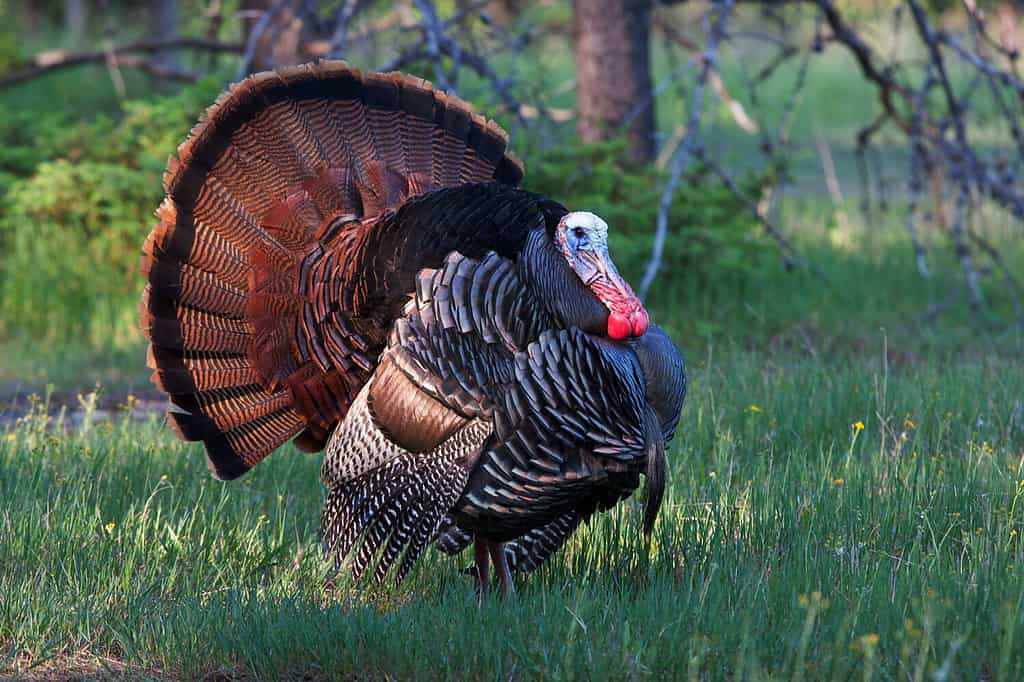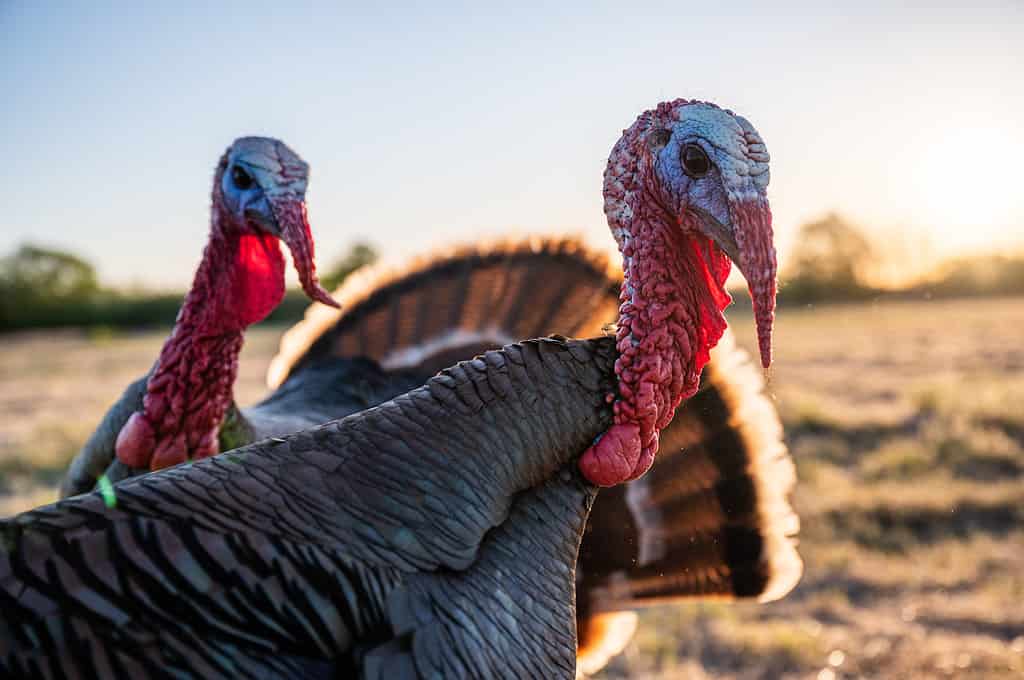Turkeys can make up to 28 different sounds—including their iconic gobble. Some sounds will only be made by either the male or female, while others are shared among the species. Below, learn more about the primary sounds turkeys make and how they are used to communicate.
Gobble
The gobble is likely the most well-known of all turkey calls. This is a loud, rapid sound with a gritty quality, sounding almost as if the turkey is gargling. Only male turkeys gobble, which is why they are known as gobblers (or toms). A turkey will gobble most often in the spring. This is his way of letting females know he is nearby. Although male turkeys are able to make a variety of sounds, the gobble is their main means of communication.
Yelp
The yelp is the primary call of the female turkey, known as the hen. There is no single meaning to this call. This is because its meaning varies on usage, with repetition and tone helping communicate what the hen needs to say. As discussed in greater detail below, many of the hen-specific calls will utilize different forms of the yelp. A prime example of this occurrence is the hen’s assembly call.
Assembly Call
Whereas the gobble is most commonly made by male turkeys, the assembly call most often comes from the female turkey. It is a hen-only sound, like the yelo. Assembly calls are constructed of several loud yelps. However, this call does differ slightly from the yelp call, if only in that it is a more drawn-out sound. A hen will use the assembly call as a way to gather all of her offspring, known as poults. It may also be used to draw her flock near.
Purr

Like cats, turkeys may occasionally purr!
©Jim Cumming/Shutterstock.com
Unlike the previous sounds which are sex-specific, both male and female turkeys may purr. Often, the purr is paired with another sound, such as the cluck which will be discussed in greater detail below. The purr of a turkey is actually quite similar to that of a cat. It is a soft noise that has a rolling sound. And, also like in cats, the purr is used to express contentment. Turkeys most commonly use this sound while feeding. Because the sound is often so low, it can be difficult to hear in wild turkeys.
Cackle
The cackle is another one of the unisex sounds turkeys make. However, on its own, the cackle is often most associated with birds that are leaving their roosting location. Among those learned so far, the cackle is a unique sound, consisting of 3 to 10 loud, abrupt notes spaced at irregular intervals.
Cluck

Turkeys will communicate with a wide variety of sounds.
©Cavan Images/ via Getty Images
When paired with the purr, it helps show contentment and communication in the flock. On its own, however, the cluck can have a different meaning. The cluck is a short, abrupt sound consisting of at least one note. It is used as a neutral way to get another turkey’s attention. It can also be used by a female turkey to acknowledge an approaching male.
Cutt
The cutt call is another form of communication used by turkeys that are often paired with the yelp. These are loud calls with a sharp pitch. When you first hear a turkey cutting, it may sound as if the individual is alarmed or frightened. However, this sound is actually used to demonstrate that the turkey is excited.
Kee Kee Call
The kee kee call has several variations. Overall, it is a three-note sound. It is short and rapid, lasting only around two seconds. The most common version of the kee kee call is the kee kee run. However, another variation is the kee kee yelp, which includes the three-note sound ending the yelp.
This particular turkey call can have many meanings based on the exact variation and how it is used. Often, it is used to locate missing poults.
Putt
The putt is the turkey’s danger call. Although it sounds similar to cut in its sharp, staccato nature, its difference in meaning is critical. A turkey will putt when it sees or hears something that could potentially threaten the flock. When this sound arises, it tells the other nearby turkeys to be alert.
Tree Call
Last but not least, the tree call is another variation of the sounds turkeys make that utilize the yelp. Like the cackle, the tree call is made while roosting. However, it occurs during the actual roosting, unlike the cackle that occurs when departing. Despite including the yelp call, the tree call is an overall soft sound that may increase in volume. As with many other sounds turkeys make, it is a sound with no single meaning used to communicate with the flock.
The photo featured at the top of this post is © Tom Reichner/Shutterstock.com
Thank you for reading! Have some feedback for us? Contact the AZ Animals editorial team.






